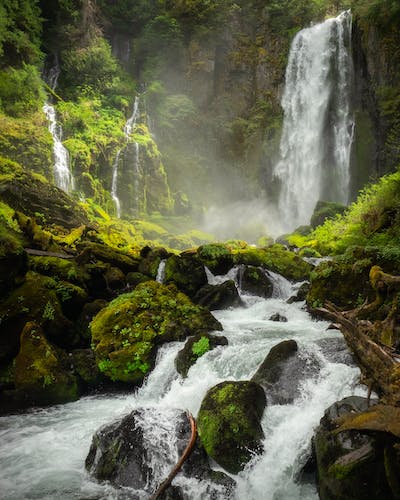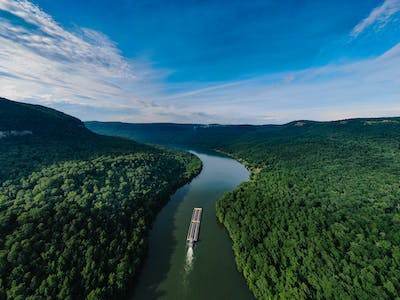Introduction:
The Amazon Rainforest, often referred to as the “Amazon Jungle” or simply “Amazon”, is the world’s largest tropical rainforest located in South America. It is spread over nine countries: Brazil, Peru, Colombia, Venezuela, Ecuador, Bolivia, Guyana, Suriname and French Guiana (a French overseas territory). It covers approximately 5.5 million square kilometers (2.1 million square miles), which is roughly half the size of the United States.

Key features of the Amazon Rainforest include its enormous biodiversity and its important role in regulating the Earth’s climate and water cycle. Here are some important aspects of the unique ecosystem

Biodiversity: The Amazon Rainforest
is surprisingly rich in plant and animal species. There are estimated to be about 390 billion individual trees belonging to about 16,000 different species. The vast range of flora and fauna found here includes jaguars, toucans, macaws, anacondas, caimans and numerous species of spiders and insects. Many of these species are yet to be researched or practiced adequately.

Indigenous Peoples:
The Amazon Rainforest is the reality of diverse indigenous communities that have lived in harmony with the forest for thousands of years. Or communities have traditional knowledge about medicinal properties of plants, sustainable agriculture and resource management.
Environmental importance: The Amazon rainforest
plays an important role in mitigating climate change. They act as a “carbon sink”, absorbing carbon dioxide from the atmosphere and sequestering it in plants and trees. Deforestation and deforestation in the Amazon contribute to greenhouse gas emissions and global warming.
Tourism in the Amazon
Tourism in the Amazon has grown in recent years. We’ll provide insights into the unique experiences that can be had in this lush environment.

the Amazon Rainforest River and waterways:
The Amazon River, the second longest river in the world after the Nile, is the lifeline for the region. It stretches over 6,400 kilometers (4,000 mi) and is fed by numerous tributaries. The river and its extensive network of waterways provide transport, food and water for millions of people and innumerable species.
Cheats with the Amazon Rainforest:
There are many cheats in the Amazon Rainforest, in which the forest destruction is the most important concern. Large-scale agriculture (especially cattle rearing and soyabean farming), tree felling, quarrying and development of infrastructure pose a serious threat to the integrity of forests and biodiversity. or activities, often driven by economic interests, that destroy habitats, destroy species and increase greenhouse gas emissions.

Promotion efforts: Various organizations and governments are working to promote and protect the Amazon Rainforest. Initiatives include establishing national parks, reserves and protected areas, as well as supporting sustainable development and enabling local communities to participate in conservation efforts.
Preserving the Amazon rainforest is vital to the health of the planet and the well-being of the people and wildlife that depend on it. Sustainable practices and responsible land use are essential to ensure the long-term survival of this remarkable and invaluable ecosystem.
Conclusion
The Amazon Rainforest is a treasure trove of biodiversity and plays a vital role in maintaining the health of our planet. Preserving this ecosystem is a collective responsibility.
Frequently Asked Questions (FAQs)
- Why is the Amazon Rainforest called the “Lungs of the Earth”?
- The Amazon produces about 20% of the world’s oxygen, earning it this nickname.
- What is the biggest threat to The Amazon Rainforest , often referred to as the “Amazon Jungle” or simply “Amazon”, is the world’s largest tropical rainforest located in South America Amazon Rainforest?
- Deforestation, often driven by logging and agriculture, is the most significant threat.
- How can I support Amazon Rainforest conservation?
- You can support organizations dedicated to conservation efforts or make sustainable choices in your daily life.
- Are there any dangerous animals in the Amazon?
- Yes, the Amazon is home to a variety of dangerous animals, including jaguars and snakes. However, they typically avoid human contact.
- Is it safe to visit Amazon Rainforest as a tourist?
- While there are inherent risks, guided tours with reputable operators can ensure a safe and memorable experience.
Thanks for looking! I hope you enjoyed this trekking guide for the (the Amazon rainforest blog) Don’t forget to check out my guide for ( best traveler places in world ) here click before you go
Happy travels

